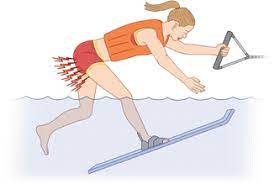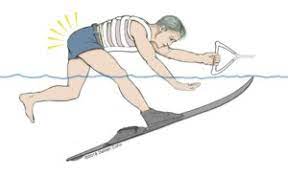
Hamstring Injuries
The 3 tendons of the hamstrings all originate at the ischial tuberosity beneath the gluteal maximus at the bottom of the buttock. The 3 tendons are the semimembranosus, the major hamstring muscle on the inside of the leg, the biceps femoris, the major hamstring muscle on the outside of the leg, and the
semitendinosis, a smaller hamstring muscle between these two muscles that also inserts on the inside part of the leg. Only the short head of the biceps femoris doesn’t originate from the ischium.
The common tendon of the hamstrings can be injured from a powerful eccentric contraction when the hip is flexed and the knee is extended. This can commonly occur with waterskiing as the skier is pulled forward causing the hip to flex while the knee is extended or straight. This can cause a complete tear of all three tendons or a partial tear of only 1 or 2 tendons. Patients usually will feel a popping sensation especially with complete tears and will have significant posterior thigh pain, pain radiating down the leg, and sometimes sciatic pain as the sciatic nerve is just to the outside of the tendons and can be pulled on as the tendons retract.
The diagnosis of a proximal hamstring tear can be commonly missed. Complete tears do poorly with nonoperative treatment so early surgical intervention is important. Patients treated nonoperatively can have a 60% loss of knee flexion strength and 30% are not unable to return to their same level of sport.
Xrays may show a bony avulsion especially on younger patients with open physis. Otherwise the study of choice is an MRI to evaluate the tear and the amount of retraction. Surgery is typically performed through an open incision repairing the hamstring tendons back to the ischium. In a study comparing
surgery to nonoperative care one study showed a 91% success rate with surgery compared to 53% with nonoperative treatment.
It is important to seek evaluation from someone who recognizes the signs and has experience in repairing hamstring ruptures.








 Website Design by
Website Design by